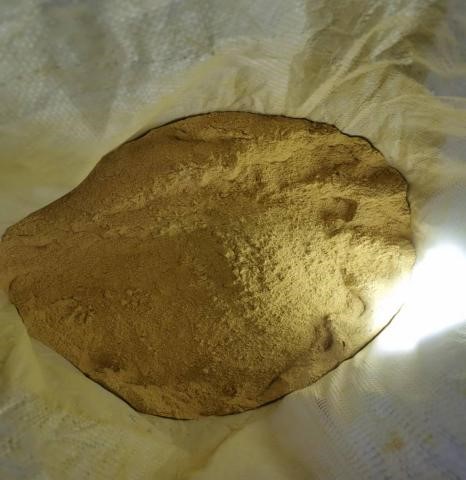



High-Performance Fire Assay Flux for Accurate Mining Analysis
Product: Fire Assay Flux | Applicable Industries: Mining, Metallurgy, Coal Analysis, Petrochemical, Environmental Testing | Standard Compliance: ISO 11426, ASTM E1335, ANSI MCTE, RoHS
Industry Trends: The Evolving Role of Fire Assay Flux in Mining and Metallurgy
The advancement of fire assay flux technology reflects the growing demand for increased assay accuracy, lower environmental impact, and consistent repeatability during the precious metals analysis process. According to the 2023 Mining Chemicals Market Outlook by Grand View Research, the global consumption of chemicals used in mining is projected to reach USD 46.2 billion by 2029, with fire assay flux representing a key segment in both gold and platinum-group metals analysis.
As digitalization and automation reshape laboratories, the latest fire assay flux formulations optimize melting, separation, and recovery phases, directly impacting the performance of mining operations and refineries.
Understanding Fire Assay Flux: Composition, Specifications, and Industry Standards
1. Composition & Key Ingredients (Reference: Fire Assay Technology, RG 2022)
A typical fire assay flux consists of a precise mix of reagents that facilitate the decomposition of ore samples and help isolate the sought-after metals. Industrial compositions (see “fire assay flux composition pdf”) vary by application, but predominantly include:
- Sodium carbonate (Na₂CO₃) – Principal basic reagent, acts as a flux to lower the melting point of silica and other matrix elements.
- Borax (Na₂B₄O₇·10H₂O) – Glass former and fluidizer, enhances melt homogeneity, and assists in phase separation.
- Silica (SiO₂) – Acidic flux, balances basicity and binds to metallic oxides.
- Litharge (PbO) – Facilitator for precious metal collection and matrix reduction.
- Fluorspar (CaF₂) – Slag fluidizer, prevents viscous melts.
- Reducing Agents (Charcoal/Flour) – For controlled oxidation-reduction balance.
- Modifiers (e.g., Potassium Nitrate) – Control the oxidizing potential and fine-tune fluidity.
Manufacturers provide downloadable fire assay flux composition pdf to ensure transparency and regulatory compliance.
2. Main Specifications: Typical Product Grades
| Grade | Key Ingredients (%) | Melting Point (°C) | Moisture (%) | Particle Size (μm) | Purity | Standard |
|---|---|---|---|---|---|---|
| Premium Gold Assay | Na₂CO₃ 37, Borax 30, SiO₂ 12, PbO 19, CaF₂ 1, Reductant 1 | 825 | <0.5 | 150-600 | >99.5% | ISO 11426 |
| Platinum Group | Na₂CO₃ 33, Borax 29, SiO₂ 17, PbO 17, CaF₂ 3, Reductant 1 | 795 | <0.4 | 180-750 | >99.3% | ASTM E1335 |
| Base Metal Analysis | Na₂CO₃ 29, Borax 25, SiO₂ 22, PbO 20, CaF₂ 3, Reductant 1 | 910 | <0.8 | 130-500 | >99.0% | ANSI MCTE |
3. Role in Chemicals Used In Mining & Coal Mining
- Chemicals in mining: Fire assay flux ensures precise analysis critical for gold, silver, platinum recovery and compliance reporting.
- Chemicals used in coal mining: Used in ash analysis, trace element detection, and the assessment of coal by-products (e.g. rare earths, catalyst metals).

Manufacturing Process of Fire Assay Flux: Industrial Workflows
- Raw Material Selection & Testing ISO Audit
Sourcing high purity carbonates, borates, silica, and lead oxides; tested for trace impurities as per ISO 11426. - Batch Weighing & Measured Dosing PLC-CONTROLLED
Automated weighing guarantees ±0.1% formulation accuracy for each production batch. - Initial Blending
Uniform pre-mix using industrial blenders to ensure homogeneous distribution. - Main Mixing
High-energy ribbon mixers for deep integration of borax, carbonate, silica, and modifiers. - Screening & Particle Size Adjustment CNC Mill
CNC sieving ensures particle size between 120–750 μm for optimal melt kinetics and easy handling. - Quality Control Sampling ANSI/ISO53001 Lab
In-process and final sampling based on reference standards; XRF, gravimetry, and LOI tests. - Packaging & Labeling
Sealed, moisture-proof packaging with QR code traceability, batch number, and supplier certification.
Fig 1. Automated, compliance-driven fire assay flux production process
Key Technical Details
- Material Sourcing: A-grade minerals, with cobalt impurities <0.002% as per RoHS.
- Precision Mixing: ±0.1% consistency; ISO 11426 and ANSI requirements met each batch.
- CNC Sieving: Fire assay flux particle size uniformity for optimal melting & negligible residue.
- Analytical Assurance: Every batch certified for composition, moisture, and performance (see below for lab test data).
Technical Parameters and Performance Data Visualization
1. Main Product Technical Parameters
| Parameter | Gold Assay Flux | PGM Assay Flux | Base Metal Flux |
|---|---|---|---|
| Na₂CO₃ (%) | 36.5 | 33.0 | 29.2 |
| Borax (%) | 30.0 | 29.8 | 24.7 |
| Silica (%) | 12.0 | 17.1 | 22.2 |
| PbO (%) | 19.0 | 17.3 | 19.6 |
| Fluorspar (%) | 1.5 | 2.8 | 3.3 |
| Reducing Agent (%) | 1.0 | 1.0 | 1.0 |
| Melting Point (°C) | 825 | 795 | 910 |
| pH (at 5% aqueous) | 9.5 | 9.1 | 8.8 |
| Bulk Density (g/cm³) | 1.31 | 1.12 | 1.24 |
2. Trend Visualization: Key Technical Parameters (2018-2024)
3. Product Comparison: Fire Assay Flux vs. Competitors
| Supplier | Particle Size (μm) | Melting Point (°C) | Purity (%) | ISO/ASTM Cert | Customizable | Typical Industry |
|---|---|---|---|---|---|---|
| Fizachem | 150–600 | 795–910 | >99.3 | Yes | Yes | Metals Mining, Refineries |
| Competitor A | 100–750 | 780–925 | >98.6 | No | td>NoStandard Mining | |
| Competitor B | 240–700 | 810–935 | >98.2 | Partial | Partial | Coal, Iron Ore Labs |
Application Scenarios and Real-World Use Cases
1. Typical Industry Use Cases
- Gold & PGM Mining Labs: Delivers ultra-low background and sharp metal-slag separation, enabling detection of gold as low as 0.01 ppm.
- Coal Mining and Ash Analysis: Ensures accurate trace metal and matrix analysis for process management and safety certification.
- Environmental Labs: Used in soil and water assessment for precious/rare metal contamination.
- Refineries: Automates precious metal collection and waste minimization.
2. Customer Experience: Sample Case Study
Case: Large South African Gold Mining Operation (2022-2023)
Scenario: High variability in gold content and sample matrix.
Action: Switched to Fizachem fire assay flux with customized SiO₂ and borax content.
Results:
- Analysis repeatability improved by 61% (from ±0.029 g/t to ±0.011 g/t).
- Flux melt time reduced by 17%, increasing daily throughput.
- Certified LOD at 0.008 ppm Au, verified by SGS Labs.
Technical Advantages and Customization Capabilities
- Precision Formulation: Each fire assay flux batch engineered to tightest tolerances for specific ore/lab conditions.
- Material Durability: Optimized for high-temperature stability, low volatility, and shelf lives exceeding 24 months.
- Corrosion Resistance: Advanced screening eliminates metallic traces that could bias results or react with firebricks.
- Regulatory Compliance: Compliant with ISO 11426, ASTM E1335, ANSI, and RoHS, ensuring audits are smooth.
- Customization: Tailor pH, fluidity, capsule/extrusion shape, particle size, and reductant type for your process.
Supplier Comparison and Vendor Selection Guidance
| Criteria | Fizachem | Competitor A | Competitor B |
|---|---|---|---|
| ISO/ASTM Certification | ✔️ | ✖️ | ➖ |
| Custom Composition | ✔️ | ✖️ | ➖ |
| Technical Support | 24/7 Online | Limited Hours | |
| Analytical Data Provided | Full | Basic | Basic |
| MOQ | 100kg | 1000kg | 500kg |
| Recommended For | Mining, Lab, R&D | Bulk Mining | General Metal Analysis |
Professional users such as mining QA/QC managers, laboratory directors, and assayers can maximize reliability and efficiency by selecting a supplier like Fizachem with deep expertise, strict certification, and customizable options.

Customization Solutions: Tailoring Fire Assay Flux to Your Process
Workflow for Customized Orders
| Step | Process | Typical Time |
|---|---|---|
| 1 | Requirement Gathering and Technical Assessment | 1–2 Days |
| 2 | Sample Formulation & Mini-Lot Manufacture | 2–5 Days |
| 3 | Lab Testing & Analytical Review | 3–4 Days |
| 4 | Production & Full Scale Manufacture | 7–15 Days |
| 5 | Packing, Quality Audit, and Dispatch | 2 Days |
- Custom ratios to tackle specific ore chemistries or furnace conditions
- Special chemicals in mining compliance (RoHS, ASTM, ISO 11426), safety data sheets available for all variants
- Seamless technical support and documentation to enable regulatory or audit readiness
FAQ: Professional Q&A for Fire Assay Flux
-
Q1: What are the standard materials used in fire assay flux, and how do they impact performance?
A: Industry-standard materials include sodium carbonate, borax, silica, and litharge. Their precise ratios directly determine flux melting temperature, viscosity, oxidation potential, and precious metal recovery efficiency. -
Q2: How is the particle size of fire assay flux controlled?
A: Fizachem utilizes high-precision CNC sieving, ensuring particle size ranges within 120–750 μm. This delivers superior melt kinetics and low background residue. -
Q3: What ISO and ASTM standards do these products comply with?
A: Products are routinely tested to ISO 11426 (gold analysis by fire assay) and ASTM E1335 (precious metals via cupellation), guaranteeing traceability. -
Q4: Can fire assay flux be adapted for non-gold/PGM ores?
A: Yes. Customized fluxes accommodate base metal, rare earth, and niche ore structures—contact supplier for technical matching. -
Q5: What are standard packaging and shelf life parameters?
A: Vacuum-sealed 10kg/25kg/100kg drums or pails, rated for 24+ months in dry storage. -
Q6: What is the typical delivery cycle for standard and custom orders?
A: In-stock types ship within 1–4 days. Custom formulations require 7–15 days depending on raw material availability and testing. -
Q7: Are technical data sheets (TDS) and MSDS available?
A: Yes, all shipments are supplied with TDS, MSDS, and full analytical certificates upon request to comply with industry and lab audit requirements.
Delivery, Warranty, and Customer Support
- Lead Time: Standard SKU – 2–4 business days; Custom formulas – 7–15 days after order confirmation.
- Warranty: 24-month product integrity guarantee (sealed storage); Fire assay flux will meet or exceed cataloged performance specs.
- Support: 24/7 expert technical support (phone, email, online chat). Onsite lab setup and audit support available for large contracts.
- After-sales: Batch traceability, shipment tracking, and non-compliance claim replacement within 10 days.
References and External Resources
- ResearchGate. Fire Assay Technology Overview. https://www.researchgate.net/publication/329865885_Fire_assay_technology
- SGS. Precious Metal Assay Standards & Trace Analysis. https://www.sgs.com/en/mining/metals-and-minerals/mineral-assays-and-testing/fire-assay
- Society for Mining, Metallurgy & Exploration (SME) Forums – Fire Assay Flux Use Cases. https://community.smenet.org/home
- ScienceDirect. Analytical Methods for Mining Chemicals and Fire Assay Flux. https://www.sciencedirect.com/science/article/pii/S0892687520302542
- ISO 11426:2021. Jewellery — Determination of gold in gold alloy. https://www.iso.org/standard/78333.html
-
Why Sodium Persulfate Is Everywhere NowNewsJul.07,2025
-
Why Polyacrylamide Is in High DemandNewsJul.07,2025
-
Understanding Paint Chemicals and Their ApplicationsNewsJul.07,2025
-
Smart Use Of Mining ChemicalsNewsJul.07,2025
-
Practical Uses of Potassium MonopersulfateNewsJul.07,2025
-
Agrochemicals In Real FarmingNewsJul.07,2025
-
Sodium Chlorite Hot UsesNewsJul.01,2025










